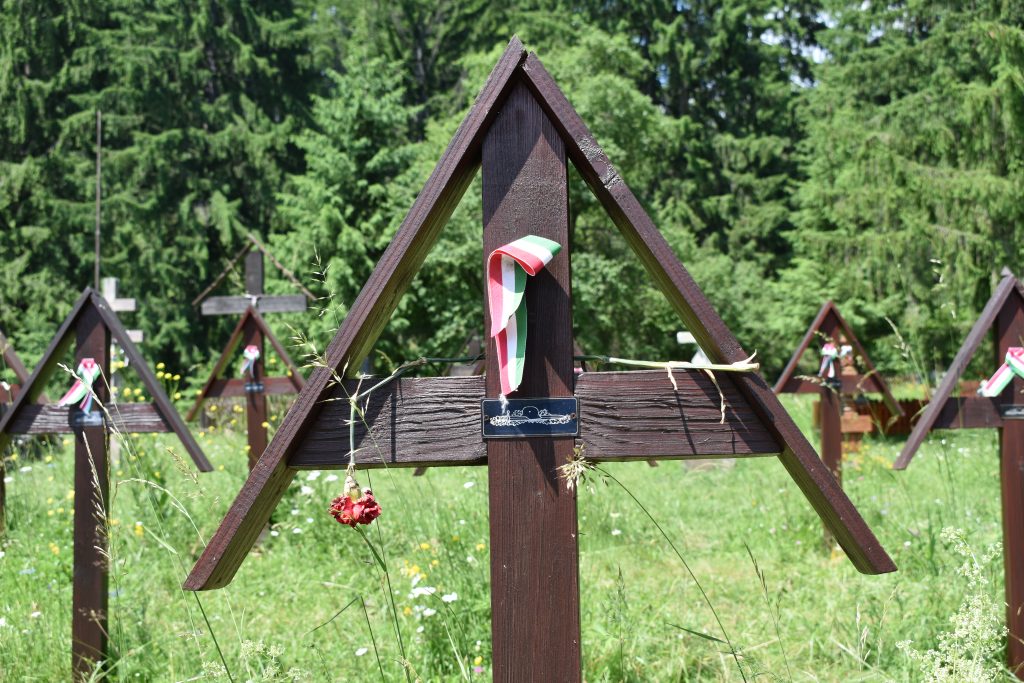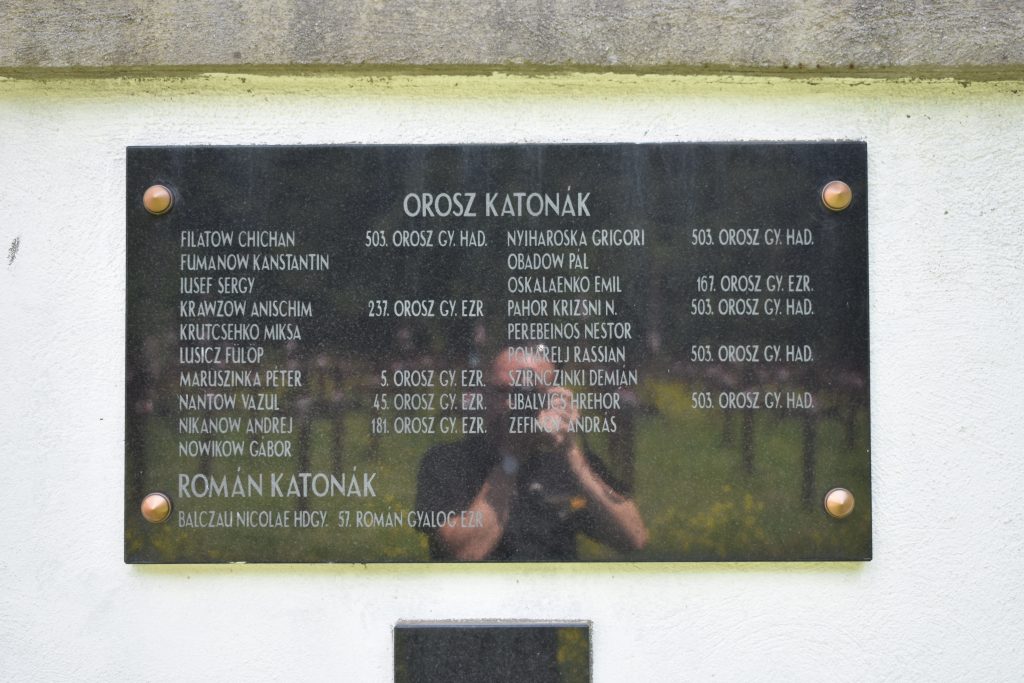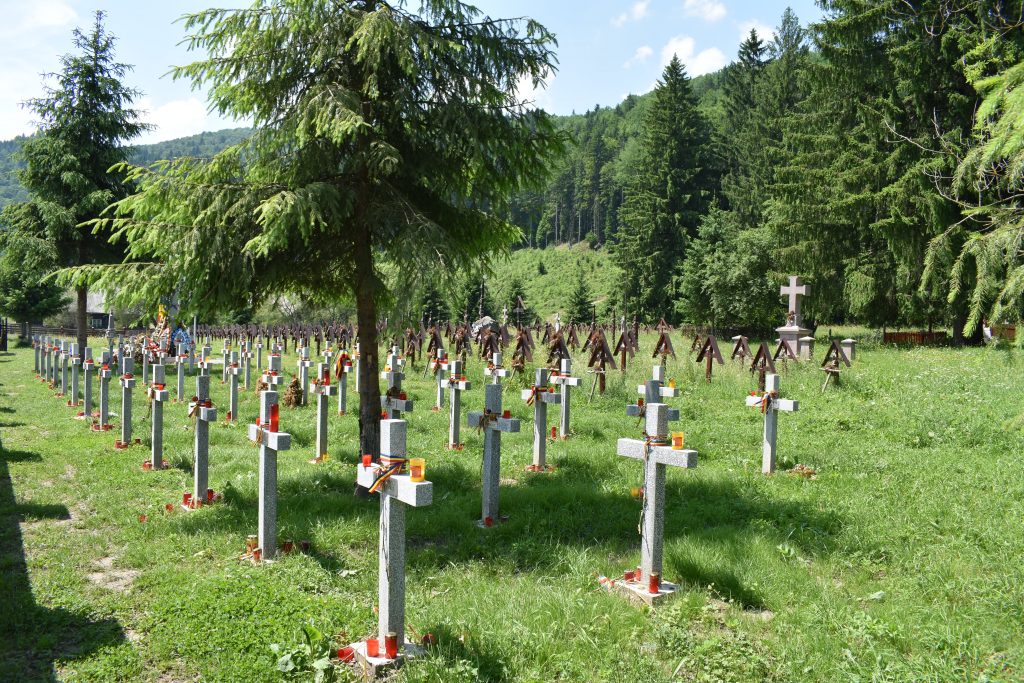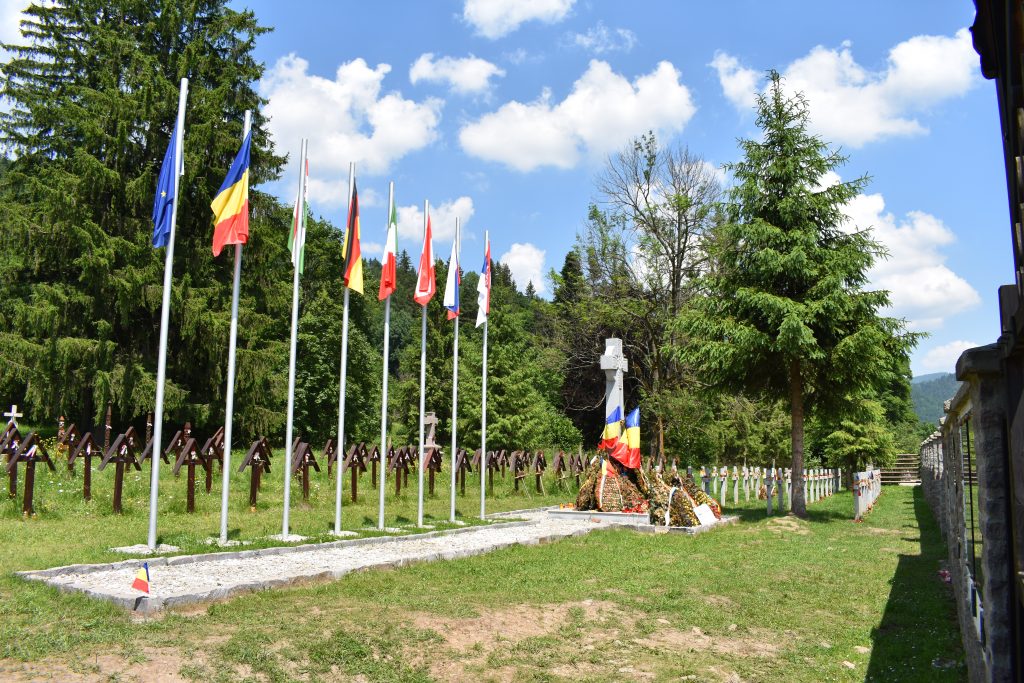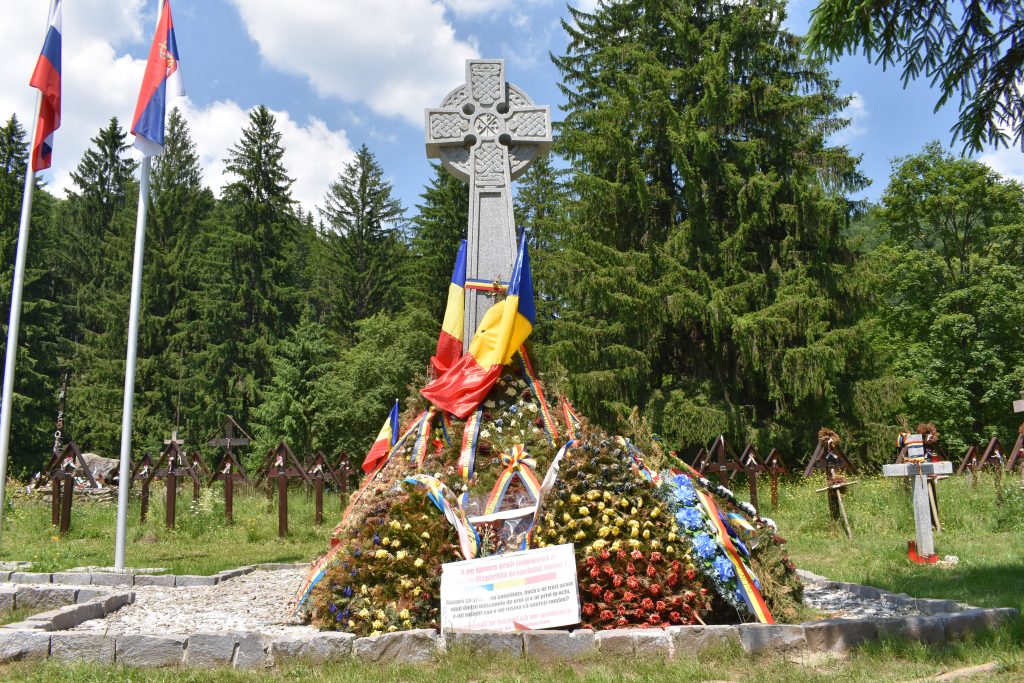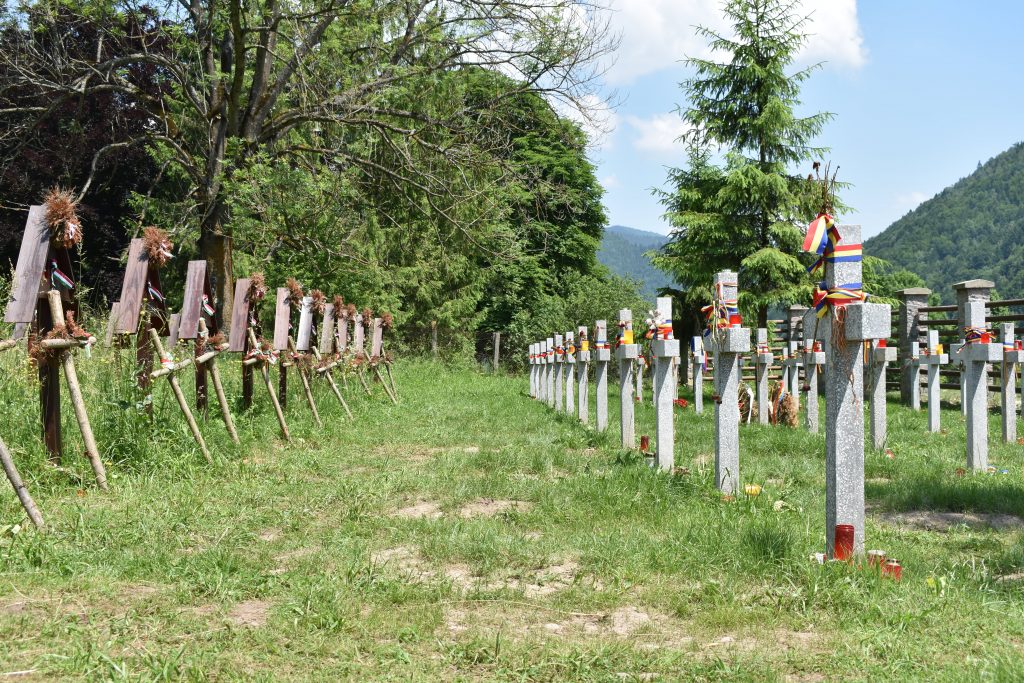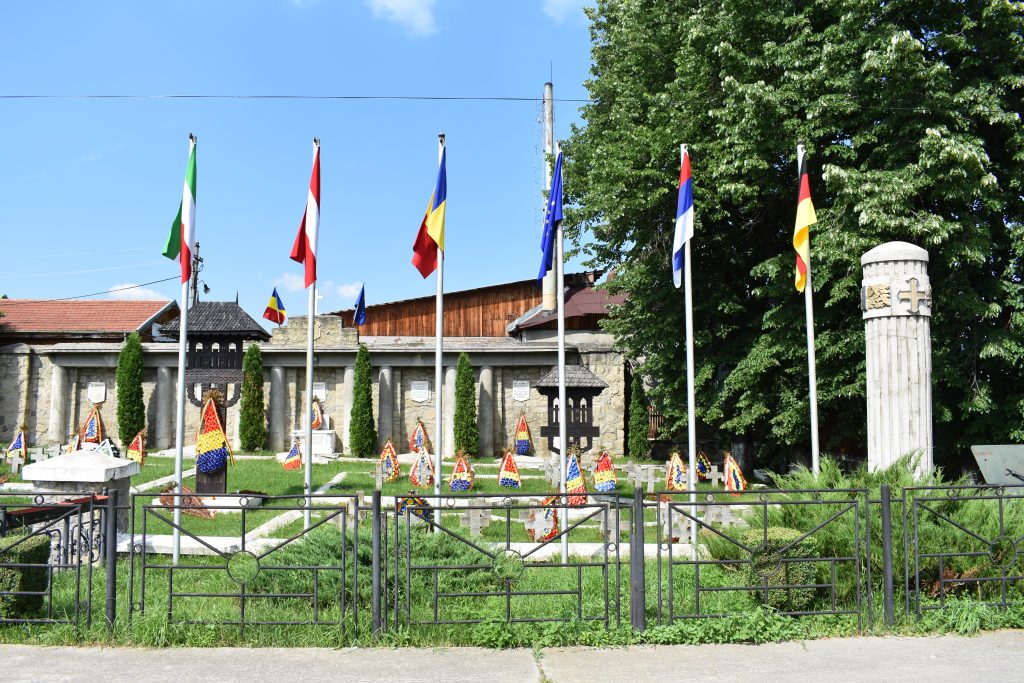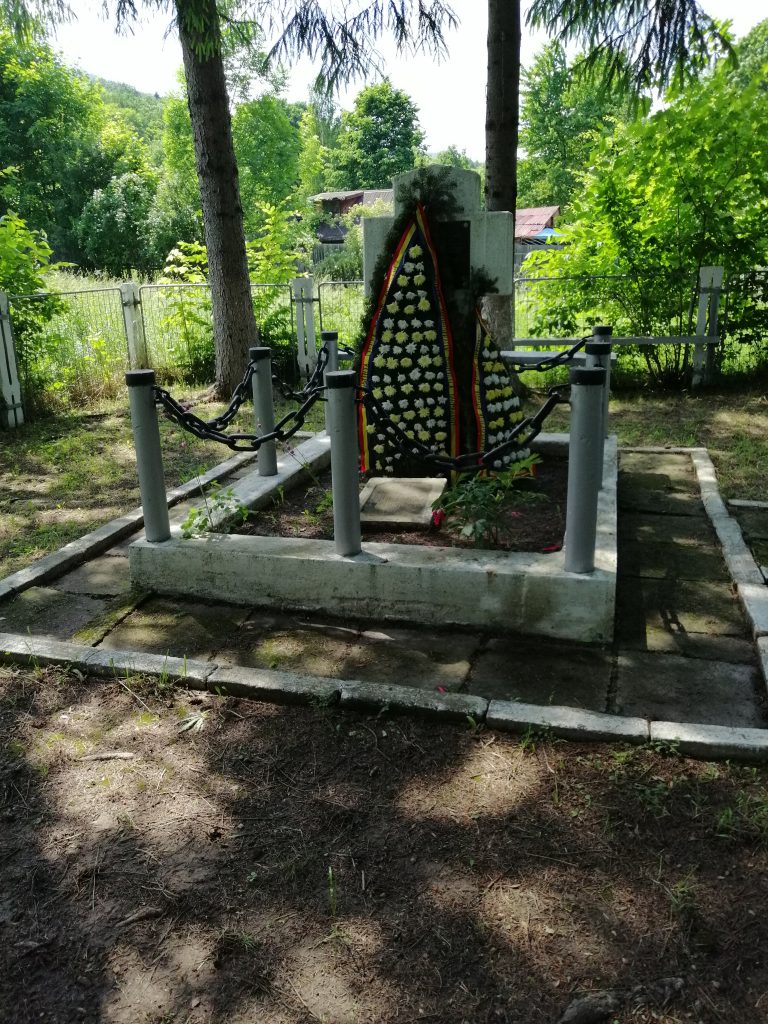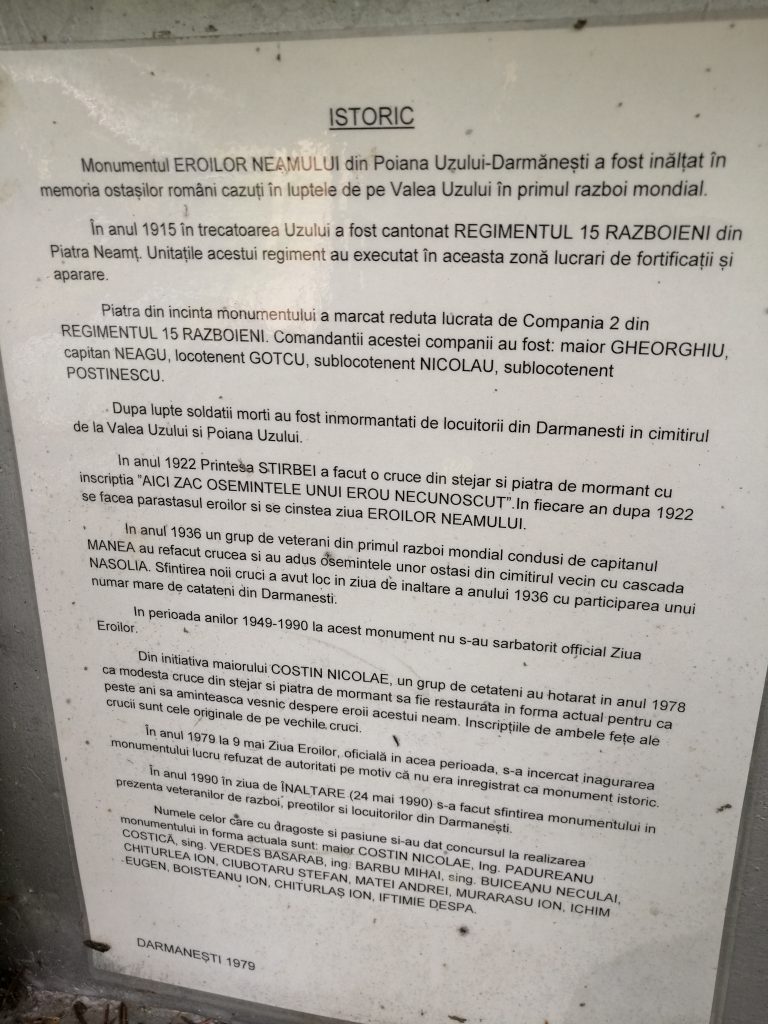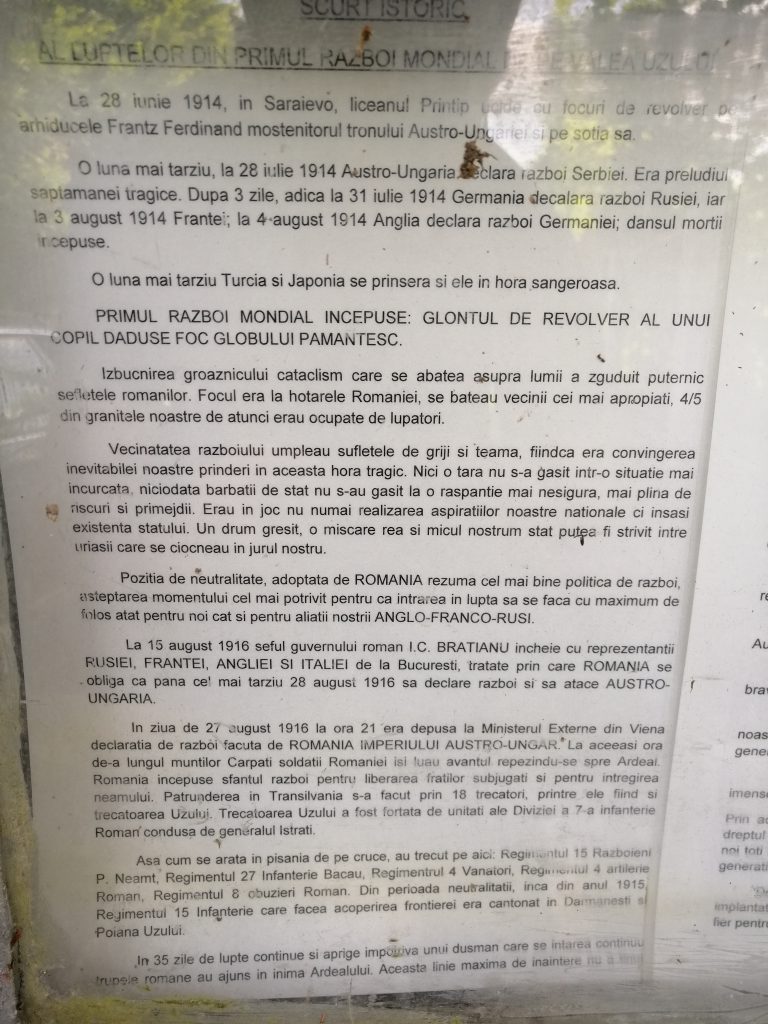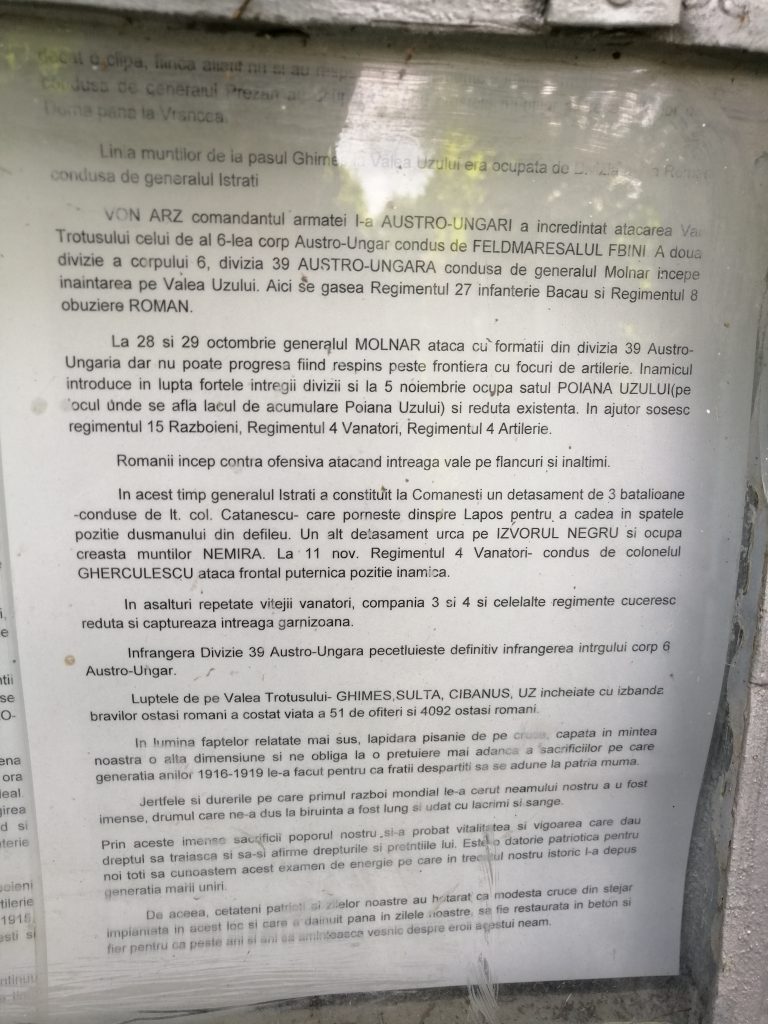This is the story of how an unsolved border dispute between two settlements (Csíkszentmárton / Sânmartin Ciuc and Dărmănești) turned abruptly for the worse when the mayor of Dărmănești took unilateral action based on questionable documents. It shows how ethnic conflict in the region can provoke tensions that then lead to irreversible impact on both the Hungarian and Romanian communities. The series of events also raises troubling questions about double standards in the Romanian judicial system. Read also Part I, Part II, Part III and Part IV.
RMDSZ Senator Barna Tánczos has announced on June 5, that Hungarians will protest against the inauguration of the illegally erected parcel by forming a human chain one hour ahead of the ceremony announced by the Dărmănești Mayor’s Office. On June 6, 2019, at 4.00 p.m. several hundred Hungarians meet and walk toward the graveyard and form a human chain. Politicians, civilians, men, and women are there, and peacefully try to stop the ceremony.
“I have never seen such a ragtag group in my life before: it was obvious that they didn’t come to honor their heroes. It was more like a team of warriors who came to occupy a land. You could see such faces and actions as after a football game when they run into the field to occupy it,” one person in the human chain told Transylvania NOW. “We were a bit afraid, but I thought (at least this is what they first told us), that a cordon formed by the gendarmerie would separate the two crowds by standing on the road. But that didn’t happen in reality. A handful of officers stood in front of the gate, and the Romanians started walking on the road, while the leaders of the two camps negotiated. Meanwhile, the Romanians shouted out loud to us “Out with Hungarians from this country,” “Shame on you,” and other insulting slogans. After a while the Romanians surrounded the cemetery and jumped into the graveyard,” he added. Some of them tore down the gate and the Romanian crowd “armed” with flags and candles rushed into the cemetery. One Hungarian person gets hit in the face by a flagpole.
András Gergely, the mayor of Csíkszentmárton, was also standing in front of the cemetery gate: “June 6 was the saddest day of my life, and I will never forget it. We were open to talks right from the start and didn’t deny that Romanian soldiers could be buried there. What I saw instead was that the Dărmănești mayor contracted 52 crosses and a big Romanian Orthodox cross and wanted to place them right from the start in that graveyard. I don’t understand why 52. Why not 11 or 149, matching the number of solders they claimed to be resting here …?”
“No one protected us; we were there as targets. I say that because the gendarmerie was overwhelmed by the situation at the Úz Valley, which is a serious problem. I don’t know if they were prepared for the scale of the situation. If they were aware of it, then we have a very serious problem, because this means they were involved in the scenario. If they weren’t aware, that’s serious as well, because then the question is: why didn’t they take measures to deal with such vandals?,” the person in the human chain told Transylvania Now.
“The ‘ceremony’ was very well organized. First came the football fans, the ultras – the faces of criminals you see in TV; they were all there – and the gendarmerie slowly pushed out us from the front of the cemetery. Then the ultras made it through into the cemetery and started to vandalize it, to take out crosses previously laid in front of the concrete crosses erected illegally by the Darmanesti mayor. After they broke the gate, the police officers didn’t go inside the cemetery to remove them but allowed the Romanian crowd to enter,” Kevend Jakab the president of the Székely Derring-do Traditionalist Society told Transylvania Now. Jakab was also part of the human chain.
The Hungarians left the site under the protection of the gendarmerie. Just a few minutes later, the Romanian crowd has started the inauguration ceremony. The names of 149 Romanian soldiers who were allegedly buried there are read by Mihai Sorin Tirnoveanu, and the whole crowd shouted “present.” After the ceremony, the mayor’s office of Dărmănești handed out diplomas to participants for being at the Úz Valley graveyard.
Since then, the Úz Valley graveyard is visited on a daily basis. The news about the conflict reached an international scale motivating both Romanians and Hungarians to visit the site.
On June 7, the Dărmănești mayor office’s employees have restored the original state of the cemetery gate in record time. The action’s legality is questionable, as the traces of vandalism disappeared. There are videos though with faces of those aggressive people.
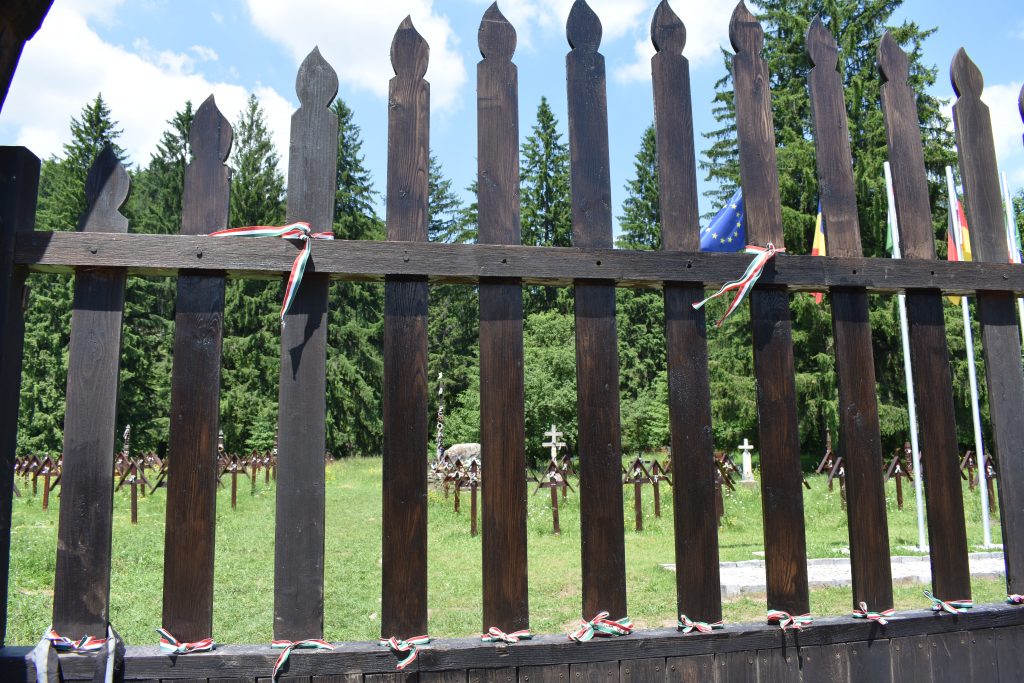
“I have no idea what kind of people are able to start such interethnic conflict and fuel it. I’m not the kind of person who is willing to participate in such actions,” a Romanian woman from Bucharest told Transylvania Now on June 16, before opening the door of the Úz Valley cemetery. “My opinion is that people must respect each other regardless of their nationality or ethnicity, and if there is a conflict, they should settle it, because the results won’t benefit either involved party,” her mother added.
The inauguration ceremony was officially held on June 6, closing the series of events the led to those tensioned moments. But the legal battle between Csíkszentmárton and Dărmănești, Harghita and Bacău counties is ongoing, on multiple fronts: for the cemetery, the settlements’ and the counties’ border.
“If there is rule of law in Romania, we will win this case. Without a doubt I see chances to revert the Úz Valley in its original condition. We have won in worse conditions, against Neamt County, where ten years ago we saw an identical, illegal conquest. After a lengthy legal battle, earlier this month the court ruled that we were right, and that what the Neamt Mayor did was illegal. This is why I firmly believe we can remove those illegally erected concrete crosses, but it’s important to close our lines and show the open-minded Romanians and the world the illegalities that happened there in the Úz Valley,” Csaba Borboly said.
